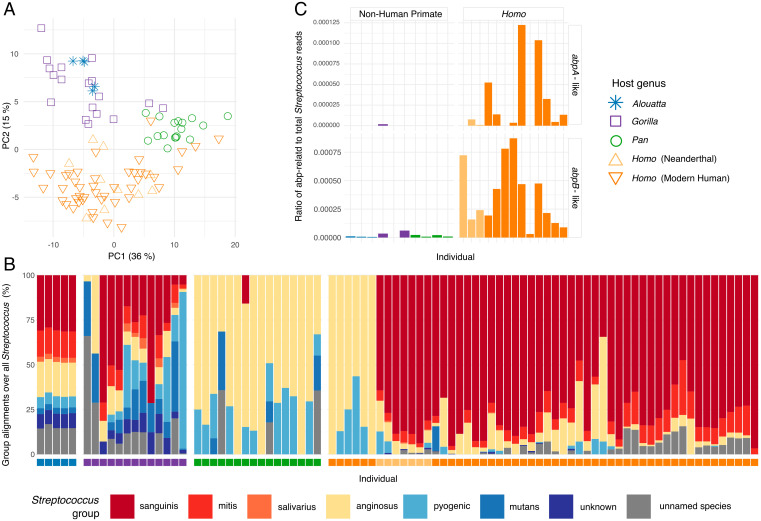Fig. 5.
Metabolic function and Streptococcus amylase-binding gene content is distinct between African hominid oral microbiomes. (A) PCA of microbial gene functions (SEED classification) clusters well-preserved samples by host genus (PERMANOVA R2 = 0.345). Homo is functionally distinct from nonhuman African hominids and howler monkeys, particularly with respect to carbohydrate metabolism (SI Appendix, Fig. S14). (B) Bar plot of proportion of alignments to different Streptococcus groups show differences between host genera. Color of squares below bars corresponds to legend in C. Amylase-binding activity has been observed among members of the Sanguinis, Mitis, and Salivarius groups (68). (C) Ratios of reads aligning to amylase-binding-protein annotated sequences versus a genus-wide Streptococcus “superreference” show higher values in Homo than nonhuman primates, based on a deep-sequenced subset of samples and four present-day modern humans. Note the ratio on the y-axes of abpA and abpB are scaled differently.

